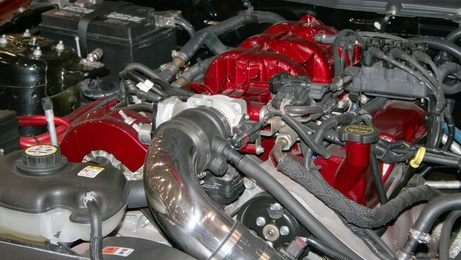
The vibrating movements of car parts often cause unwanted noise. Noise dampening kits easily solve the problem. Although the following instructions refer to deadening noise in the door area, the technique is easily applied to any other noise-prone areas of your vehicle.
Figure out the areas in your car that seem to emit the most noise. Typical areas prone to rattling and vibration in most vehicles include: trunk, floors, doors, speakers, front hood and license plates. Drive around the block, and test out different speaker volumes to get the most accurate portrayal of the noise range.
Purchase a noise dampening kit for the specific problem areas. These kits contain noise deadening sheets of material that absorb sounds and vibrations. The kits are available in most auto supply stores.
Set the parking brake, and disconnect the negative battery terminal. This prevents issues, such as electrical shorts, from happening.
Use a panel tool to pry off the retaining clips of your vehicle's interior door until the entire panel has come loose. Run the panel tool along the edges to be sure there are no more clips or other obstructions. Lift the panel out of the window track, and set it out of your immediate working space.
Tug at the plastic, weatherproof material that remains on the inside of the door. Wipe down the interior door metal with a de-greasing agent, such as denatured alcohol (available at hardware stores). This ensures the door is clean, grease-free and ready for sound damping installation.
Place the sheet of noise dampening material underneath the plastic, weatherproof piece you've removed from the vehicle. Use the plastic as a guide, and cut the noise material around the entire length of the plastic with a knife. Take care to account for holes, such as those for window cranks and other fixtures.
Warm the noise damping sheet with a hair dryer or heat gun. Peel off the back layer, and stick the adhesive side to the interior car door. Use a small, hand-held roller to carefully roll over the sheet. Be sure to roll out air bubbles and folds for the smoothest application.
Go over the final adhered sheet with a hair dryer or heat gun to mold the sheet to the door. Use your hands or a roller to smooth the sheet, push down corners or work out additional bubbles. Apply the materials to any other car areas in the same manner.